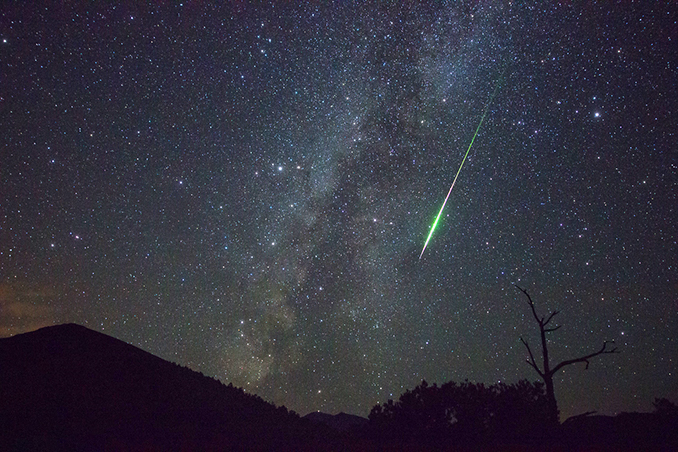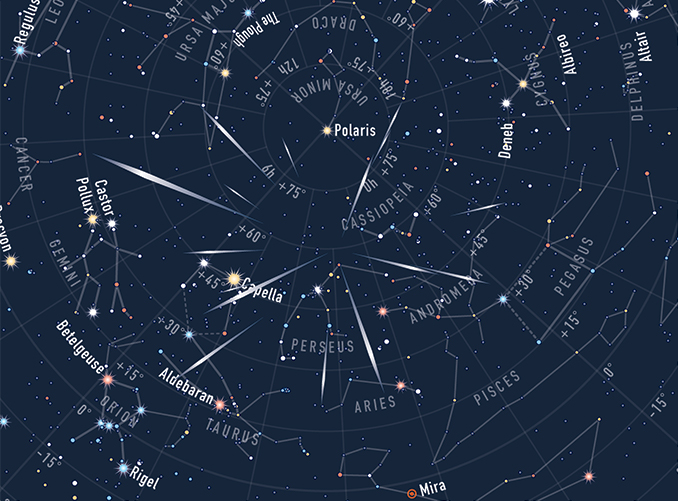Get ready for the annual Perseid meteor shower this week, one of the most eagerly anticipated events on the astronomical calendar. Although December’s Geminid shower is richer, the Perseids have become very popular, largely due to the mild summer nights. In a favourable year, when the Moon is out of the way, as many as 50–70 meteors per hour can be seen at the shower’s peak.

The Perseids are usually active to some degree from around mid-July to late August. This year, the shower is predicted to peak between 10:00 and 13:00 UT on Wednesday, 12 August. This favours observers in North America, with observers on the European side of the pond urged to observe overnight Tuesday and Wednesday.
Unfortunately, the Moon will interfere with observations on both nights, but not to the same extent as in 2019, when it was close to a full-phase. The Perseid radiant, lying in northern Perseus close to the superb Double Cluster, is well up in the north-eastern sky by 11pm BST (22:00 UT) and climbs to an altitude of 50 degrees by 2am BST (01:00 UT).
On Tuesday night a last-quarter-phase Moon rises shortly after 11.30pm BST, lying on the boundary between south-eastern Aries and mid-western Taurus. By 2am, it’s climbed to an altitude of 20 degrees above the eastern horizon and will start to have an increasingly detrimental effect on the visibility of the fainter meteors as the radiant becomes better placed towards dawn.

On the following night, the Moons presents slightly less of a problem as it rises at about 12.15am (23:15 UT) and its phase has reduced to 38 per cent. On both nights your observing circumstances can be improved substantially if you can ‘hide’ the Moon behind a wall or a fence as it rises.
The Perseids produce fast meteors, with many bright events that often leave lingering trails or trails. Obviously, more meteors will be spotted from a dark countryside site, but from a suburban location try to shield yourself from any local lights. Wherever you observe from, become dark adapted and acquire a comfortable observing position – a sun lounger or deck chair is a good choice – before starting any watches.



